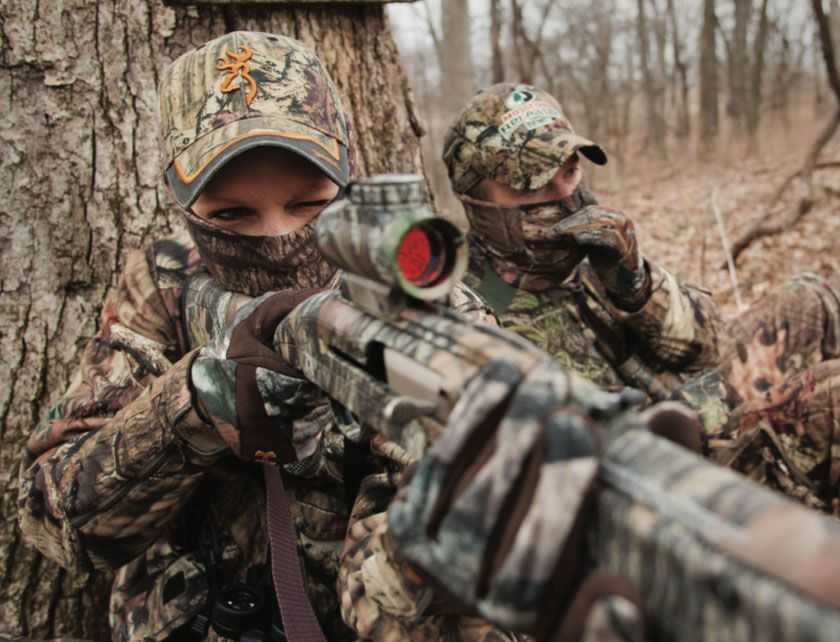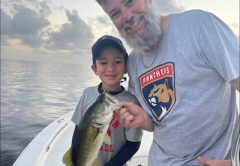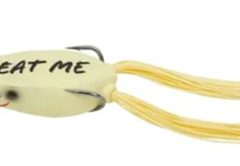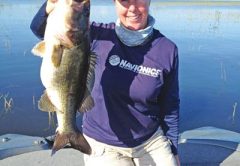
With winter behind us in Florida, March ushers-in the prospects of warming temperatures, sunny skies and the return of the Spring Turkey Season. Here in Florida we are home to one of the most prized species of turkey in the United States the Osceola turkey.
The Osceola turkey, a.k.a. the Florida turkey, is the smallest and one of the most challenging subspecies of turkey to hunt. In the United States there are four recognized species of turkeys; the Eastern, Rio Grande, Merriam’s and the Osceola. The National Wild Turkey Federation (NWTF) also recognizes two species outside of the U.S. and they are the Gould’s turkey found in Mexico and limited areas of the U.S. southwest and the ocellated wild turkey (having a ‘eye’ spot on their tail feathers) found in the Yucatan area of Mexico and Central America.
To promote and encourage the sport of turkey hunting the NWTF recognizes and awards hunters who have achieved harvesting select species of birds, these are called Slams. A Grand Slam requires the harvesting of all four U.S. species of turkey (Eastern, Rio Grande, Merriam’s and Osceola), a Royal Slam also known as the North American Slam, is a Grand Slam plus a Gould’s turkey, and the World Slam is the harvesting of all six species of turkey.
The Osceola turkey was named after a famous 1800’s Seminole Indian Chief by the naturalist W.E.D. Scott as he documented the description and classification of the species in 1890. The range of the Osceola is limited to the Florida peninsula. Under NWTF guidelines their range is south of a boundary line between Taylor and Dixie counties on the gulf coast to a line running between Nassau and Duval counties on the east coast of Florida. North of this line the species is considered to belong to the Eastern turkey subspecies. The Osceola’s habitat consists mainly of marshes, palmetto scrubland, flat pine and oak forests, and prairie lands. Young birds will feed on assort nuts, insects, amphibians, berries and grains. As the bird ages their diet shifts to mainly a plant based diet.
THE OSCEOLA TURKEY, A.K.A. THE FLORIDA TURKEY, IS THE SMALLEST AND ONE OF THE MOST CHALLENGING SUBSPECIES OF TURKEY TO HUNT.
One of the distinguishing characteristics of the Osceola is their small size, adult males rarely exceed 20-lbs while females range from 6 to 14 lbs. In comparing an Osceola’s feathers to its cousin the Eastern turkey, the Osceola’s white bars are narrower with an irregular, broken pattern and they don’t extend to the feather shaft and the color black dominates the feather. They also have more iridescent green and red colors with less bronze color in their feathers than the Eastern species.
The Osceola turkey has very keen eye sight with a 270-degree field of vision. This makes it very difficult for a hunter to approach them undetected. Most of the time hunters will utilize tree stands or blinds and lie in wait for a turkey to approach as opposed to stalking a turkey. Generally an Osceola will roost overnight in a low-lying tree and then come out during the morning into open fields to feed.
In the State of Florida the harvesting of turkey is available on specific State Wildlife Management Areas (WMAs) and on private properties with the permission of the land owner. Different regulations apply to these areas so it is important to understand the regulations as they pertain to the area you are hunting. For details on specific WMAs contact your regional FWC office or on the web at www.MyFWC.com.
On private land turkey can be taken by all legal rifles, shotguns, muzzleloaders, crossbows, bows and pistols. The daily bag limit is two birds and the season limit is two birds. Hunting hours on private land is from one-half hour before sunrise to sunset.
On WMAs the use of firearms is limited to shotguns and muzzle loading shotguns using shot no larger than No. 2 shot. Bows and crossbows also may be used in most WMAs. The daily bag limit in State WMAs is one turkey and two per season. The hours are also different on WMAs and they are from one-half hour before sunrise to 1:00pm. Some WMAs are ‘walk on’ WMAs were you don’t need a quota-permit to hunt the land and access to the area is on a daily, first come first serve basis. Other WMAs require you to obtain a quota-permit prior to hunting the area. The forty-three ‘walk-on’ WMAs and the number of daily walk-on permits are listed on FWC’s website www.MyFWC.com.
Whether on private land or on a WMA you need a Florida hunting license ($ 17.00 resident / $46.50 nonresident 10-day license), a turkey permit ($ 10.00 resident / $ 125.00 non-resident), and a WMA permit ($26.50) if hunting in these areas. They can be purchased by calling (888) 486-8356, online at www.GoOutdoorFlorida.com, at Florida county tax collector’s offices, and at many sporting goods retailers.
The key to a successful hunt is knowledge of the area and the habits of the local birds. This can only be learned by good scouting and spending quality time in the woods. Learning the different calls and when to use them can be a critical component to a successful hunt. Just like ducks, deer, and other wildlife, turkey have their own language. There are assembly calls, lost calls, tree calls, mating yelps, gobbler yelps, and a host of other unique calls. If you’re not familiar with the different calls then purchase a ‘CD’ with the calls on them or search YouTube for some training videos. Having a ‘call plan’ for the last 100-yards could be the difference of a Tom walking towards you or away from you. If you’re going to shoot from a blind, maintain clear fields of fire. Set up your position taking into consideration your own swing of the gun and try to get the largest field of view as possible. Having a short field of fire gives you little time to react to an approaching bird and your sudden movement to raise your gun or reposition yourself could scare the bird away. Most of all conceal yourself and be patient.
No matter where you are, hunting turkey is a challenging sport. For the local hunter it takes a lot of field time to be successful at it. For those visiting or for those just wanting to experience the hunt then hiring one of the local outfitters/ guides is probably a more effective means of harvesting a bird. Whichever you choose, enjoy the day and the time in the woods.






